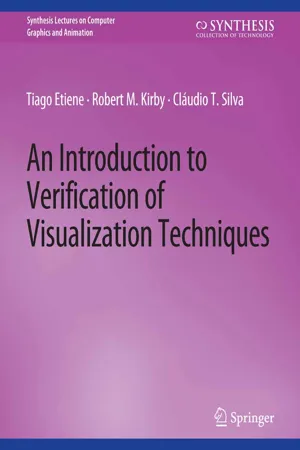
An Introduction to Verification of Visualization Techniques
- English
- PDF
- Available on iOS & Android
An Introduction to Verification of Visualization Techniques
About This Book
As we increase our reliance on computer-generated information, often using it as part of our decision-making process, we must devise tools to assess the correctness of that information. Consider, for example, software embedded on vehicles, used for simulating aircraft performance, or used in medical imaging. In those cases, software correctness is of paramount importance as there's little room for error. Software verification is one of the tools available to attain such goals. Verification is a well known and widely studied subfield of computer science and computational science and the goal is to help us increase confidence in the software implementation by verifying that the software does what it is supposed to do. The goal of this book is to introduce the reader to software verification in the context of visualization. In the same way we became more dependent on commercial software, we have also increased our reliance on visualization software. The reason is simple: visualization isthe lens through which users can understand complex data, and as such it must be verified. The explosion in our ability to amass data requires tools not only to store and analyze data, but also to visualize it. This book is comprised of six chapters. After an introduction to the goals of the book, we present a brief description of both worlds of visualization (Chapter 2) and verification (Chapter 3). We then proceed to illustrate the main steps of the verification pipeline for visualization algorithms. We focus on two classic volume visualization techniques, namely, Isosurface Extraction (Chapter 4) and Direct Volume Rendering (Chapter 5). We explain how to verify implementations of those techniques and report the latest results in the field of verification of visualization techniques. The last chapter concludes the book and highlights new research topics for the future.
Frequently asked questions
Information
Table of contents
- Cover
- Copyright Page
- Title Page
- Contents
- Preface
- Introduction
- Visualization in the Real World
- Validation and Verification in Simulation Science
- Isosurface Verification
- Volume Rendering Verification
- Conclusion
- Bibliography
- Authors’ Biographies